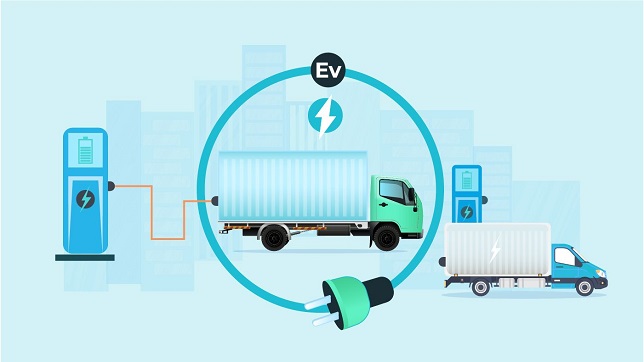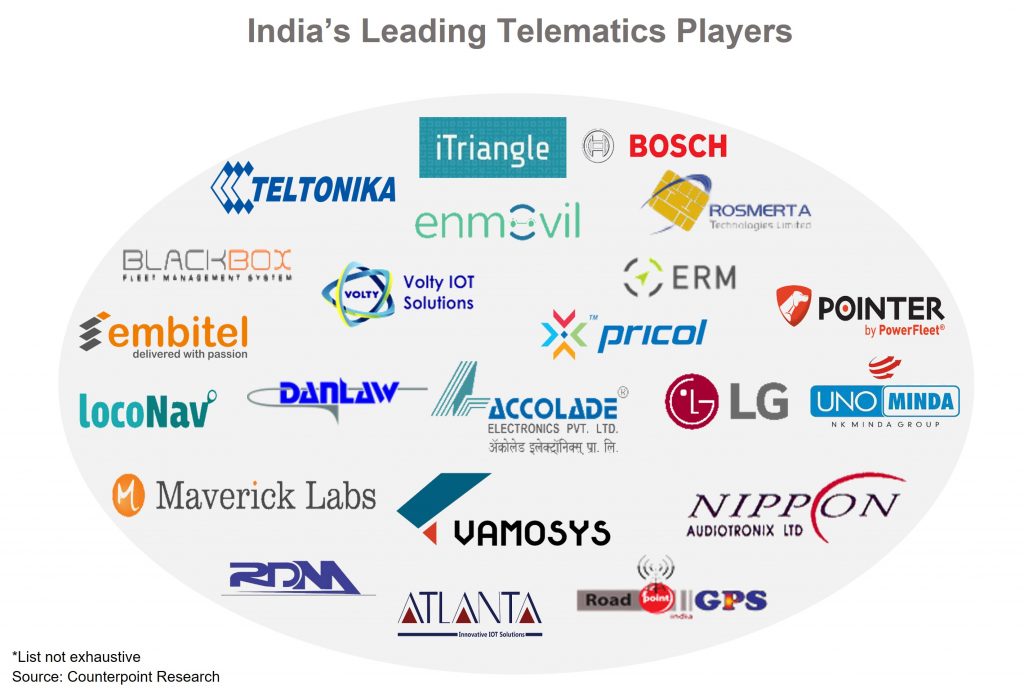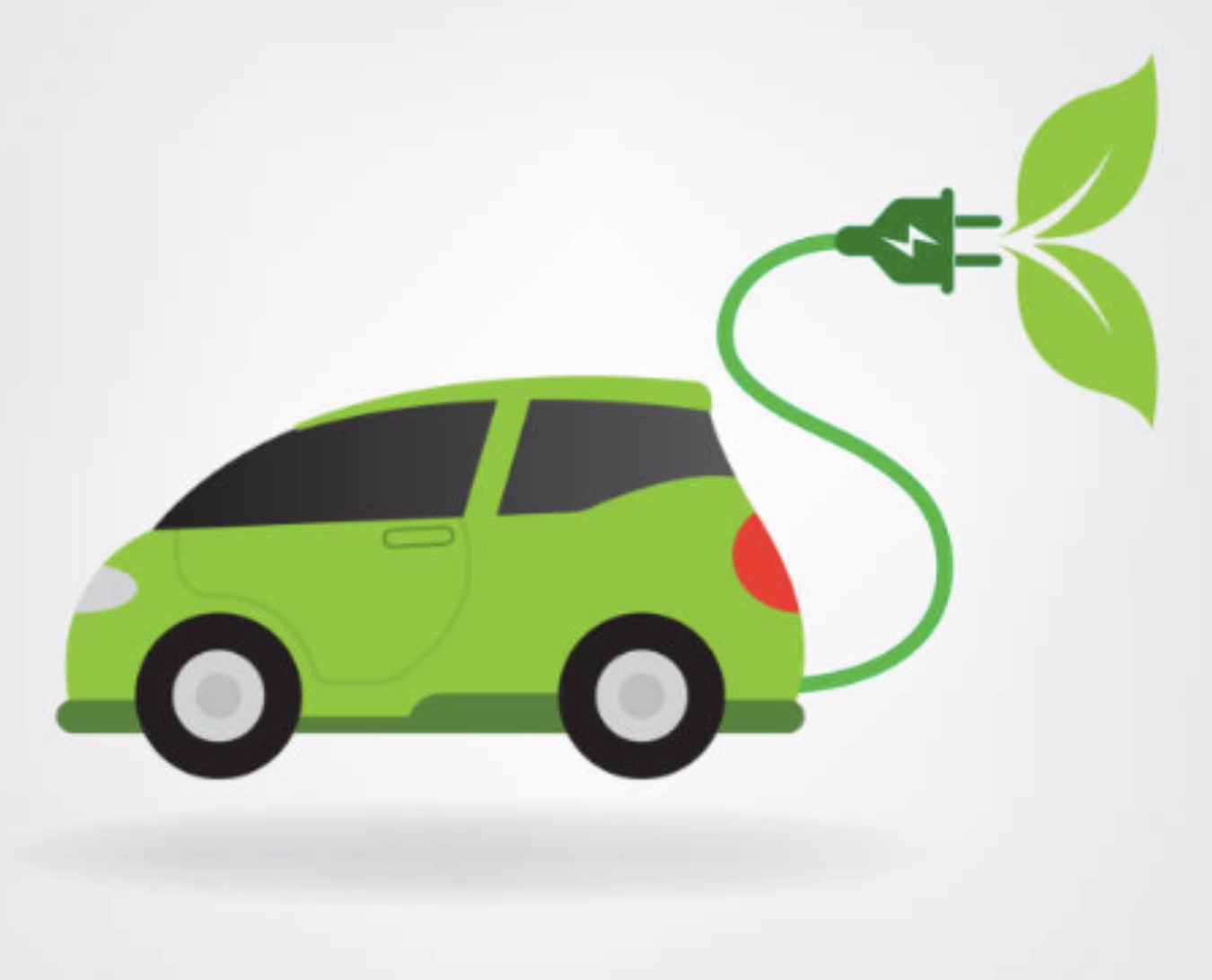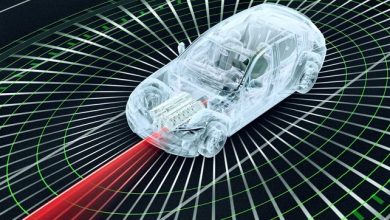EVs to Push Telematics Adoption

Telematics is presently one of the most promising technologies rapidly modernising India’s mobility sector. Telematics services are enabling customers to access a variety of features as per their requirements. In particular, commercial vehicle operators are using these services to improve productivity. The basic function of a telematics device is to connect a vehicle to the internet so that a variety of information is shared wirelessly, like the vehicle’s location, trips, health and access to SOS services. Before 2021, the penetration of telematics devices was not high in the Indian market despite a few policy initiatives. But now India’s automotive sector is steadily moving in this direction. With the rise of electric vehicles (EVs), we expect a further increase in the demand for telematics.
Among the different types of telematics devices, black box and OBD-II are used most commonly. Based on their features and specifications, telematic devices in India can be divided into three categories:
Basic devices: These devices support basic functionalities like real-time vehicle tracking, geo-fencing, and geo-tagging. They can also support either GPRS or LTE and may or may not be equipped with a panic/SOS button.
Compliance devices: Compliance devices are certified by the Automotive Research Association of India (ARAI) or the International Centre for Automotive Technology (ICAT) to ensure compliance with government specifications under the AIS-140 regulation. In addition to the basic features, compliance devices must have an eSIM and a panic/SOS button. Moreover, compliance devices must transmit data to at least two different IP addresses for proper monitoring and real-time vehicle tracking. The device must function through India’s GAGAN (GPS Aided GEO Augmented Navigation) satellite-based system. Currently, there are more than 125 approved vendors across the country which provide AIS-140 telematics devices. Commercial vehicles are the major drivers of India’s compliance device market.
Advanced devices: Advanced telematics devices are generally equipped with a strong 4G connectivity module that can support an advanced driver-assistance system (ADAS) along with Wi-Fi hotspots. Moreover, software integration can access most of the vehicle diagnostic data such as speed alerts, fuel monitoring, route planning, and driver alertness. These devices come with larger in-built storage to store vehicle data when connectivity is not available. Advanced telematics can also provide driving recommendations, driver monitoring systems, dashboard cameras for incident recording and overall vehicle analytics for better vehicle maintenance. However, advanced devices form a very niche base in the Indian market.
The rise in demand for telematics has brought forward a wide range of applications like fleet management, usage-based insurance, driving recommendations and vehicle-to-grid data transmission.
Uses of telematics in EVs
The steady increase in the share of EVs in total vehicle sales ensures that electric is the future. By the end of 2030, the EV share in global vehicle sales is expected to cross 53%. But with this increase in EV numbers, the demand for their service and maintenance will also increase. Unlike an internal combustion engine (ICE) vehicle, EVs have fewer moving parts, thus ensuring lower maintenance costs. However, EVs are complex electronic machines, and a lot of systems need to work simultaneously for an EV to function properly. For instance, it is important to ensure the proper flow of electricity to the motors, proper functioning of regenerative braking to store the kinetic energy, proper temperature of the battery, adequate battery charge and proper functioning of the charging port. Besides, in-cabin electronics like lights, infotainment systems, display on driver dashboards, and HVAC systems must be optimized. The usage of telematics in EVs is not limited to real-time tracking, geo-fencing or geo-tagging. It can also provide necessary information on vehicle health along with map rerouting, booking of slots in charging and swapping stations, and remote access to the vehicle, including theft alerts.
Sometimes electronic systems fail to operate properly, which can be fixed with simple software updates. Telematics also provides firmware and software updates over the air (FOTA/SOTA), through which software bugs can be fixed easily. Also, when connected to the internet, EVs are prone to cyber threats, which can sometimes lead to fatal consequences. To safeguard the passengers, telematics is used to deploy anti-virus systems. The information transmitted by the EVs through telematics gets processed and analyzed in real-time, which can help in refining designs and tailoring them for India’s roads and environment.
Present Indian scenario
India is at a very nascent stage in both EV and telematics adoption. By the end of 2021, EV penetration was a mere 2% of total vehicle sales and, in turn, telematics devices designed for EVs were lesser. Of the total vehicles sold in 2021, only 5.1% came with embedded telematics and total telematics penetration including aftermarket and retrofit was just little above 2%. So, before we can discuss telematics in EVs, we must find out why the penetration of telematics is so low in India. The following are some of the key reasons:
Less local sourcing: India is strongly lagging in connectivity module and semiconductor production. Most of the important components required for telematics are imported, resulting in high costs.
Lack of vertical integration: Due to this lack of local sourcing of important components, vertical integration is almost absent. Manufacturers have to rely on different suppliers, which results in the varied cost of components.
Fragmented market: India’s telematics market is quite fragmented. Many players have limited capacity and are present only in a few regions. There are a few telematics hotspot markets where the competition is comparatively more than the rest of the country.
Lack of proper government policy and technology implementation: Back in 2017, the government put out a mandate that all commercial vehicles including school buses must be fitted with telematics under the AIS-140 regulation. There are a few strict specifications that are required to be present in an AIS-140-certified device. However, even after almost five years, AIS-140 penetration remains low in the country. This can be attributed to the presence of bureaucratic red tape and favoritism. The failure to set up proper backend servers required under the AIS-140 regulation is another major reason.
Network black spots: Many remote and rural areas in the country are still deprived of proper mobile internet connectivity along with many network black spots. To cater to such scenarios, telematics devices should be equipped with large data storage where the vehicle data can be collected and transmitted later as and when internet service resumes. However, with bigger storage, the device cost also increases.
Technological barriers: The usage of physical SIM cards makes service provider portability difficult. To counter this, companies can provide an eSIM, which also happens to be a mandatory requirement for the AIS-140 certification. As India is at a nascent stage of eSIM adoption, it will be difficult and costly for domestic manufacturers to provide eSIM options across their product portfolios.

Market outlook
It is necessary to take full advantage of EV telematics. As EV sales in India are slowly gaining traction, the demand for telematics will rise significantly in the coming years. Counterpoint Research predicts that almost 71% of two-wheeler sales, nearly 99% of three-wheeler sales, almost 30% of passenger car sales and more than 54% of commercial vehicle sales, including bus sales, will be electric by the end of 2030. Among two-wheelers, most of the high-speed (>25km/hr) vehicles with a fixed battery will come with embedded telematics. Similarly, all electric three-wheelers for cargo and last-mile delivery will have embedded telematics. Telematics for commercial vehicles will specially have a wider application for fleet management and asset tracking.
We might not need to wait till 2030 to witness a boom in India’s telematics market. The Ministry of Roadways’ decision to remove toll tax plazas to clear roads will likely boost the demand for both embedded and retrofitted telematics devices. According to the ministry, the government will deduct toll taxes directly from vehicle owners’ bank accounts based on the vehicle’s GPS location. If implemented properly, this decision can give a big boost to telematics sales. Total telematics penetration in India is expected to cross 15% by end of 2030.
Heading toward the future
In the automotive sector, the ultimate aim of developing newer and better technologies is to achieve autonomy. Some nations have approved the deployment of Level 3 (L3+) and higher autonomy. Moreover, self-driving cars are also being used in ride-hailing services in some places. However, India is still a long way from proper in-vehicle connectivity, electrification and autonomy. There is an urgent need for the country to develop indigenous technologies in this field. Most of the leaders in the automotive sector, including in components, are from other countries.
India is currently at a stage where it can rise to become one of the world’s most important business hubs. Given the present global geopolitics and the Indian government’s urge to make the country self-reliant through policies and schemes like the Performance Linked Incentive (PLI) and Make in India, India is set to become one of the most desired destinations to set up manufacturing plants. With the entrance of foreign technology, the Indian automotive sector is expected to grow in leaps and bounds.
Author:

Abhik Mukherjee
Research Analyst (Automotive Ecosystem and IoT)
Counterpoint Technology Market Research
Abhik is a Research Analyst at Counterpoint Technology Market Research based out of Kolkata. He is Part of Counterpoint’s Automotive and IoT team. He is also interested in tracking emerging technologies. His core area of research is Electric vehicles and ecosystems. Before joining Counterpoint, he worked as an Academic Associate and holds an M.Phil. degree in Economics from Visva-Bharati Central University.
Published in Telematics Wire




